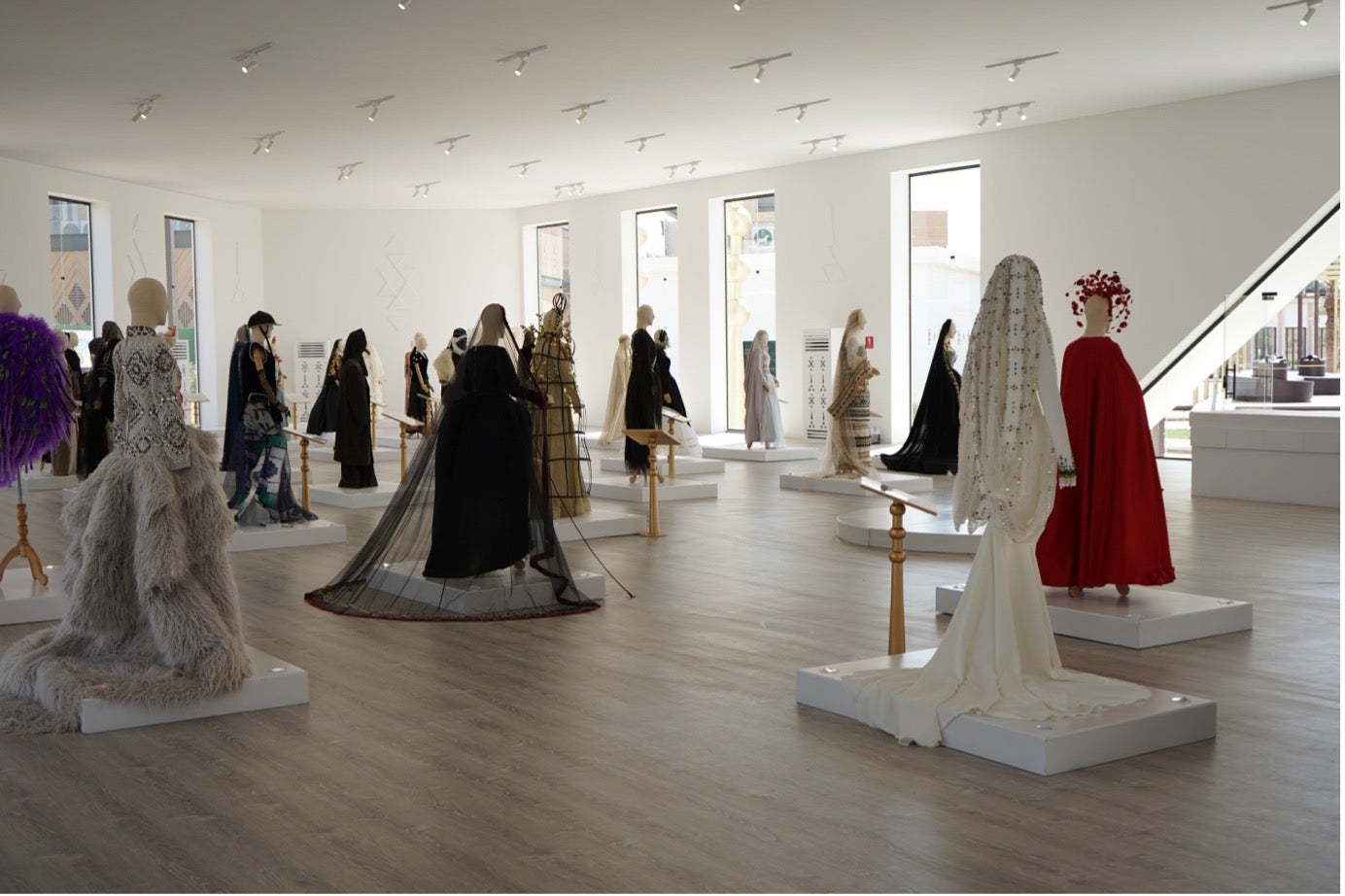Painters, poets and horses
It isn’t only racing fans and owners who are inspired by the Arabian horses competing at the Saudi Cup. The Kingdom’s love of horses is celebrated in images, fashion, and words - from ancient Greek epics to modern-day poetry collections, horses have inspired countless poets to write about their majesty and allure

“She is the daughter of the wind….”
So reads an inscription at an exhibition devoted to Krea’a, perhaps the greatest Arabian horse of them all – certainly the most romantic.
The exhibition, Krea’a and the Wind, is not in a conventional art gallery. It’s housed in a low wooden building in the middle of a racecourse, organized by the Ministry of Culture and perfectly positioned half a furlong away from the track, where thoroughbreds and purebred Arabians from around the world are competing in Krea’a’s birthplace: Saudi Arabia.
The exhibition is just one of many cultural activations organised by the Ministry during the two-day event which is becoming a prominent fixture in the equestrian calendar. In addition to Krea’a and the Wind, there are activations showcasing art, fashion, food and artisanal products.
The Saudi Cup weekend, which is organized by the Jockey Club of Saudi Arabia in partnership with the Ministry of culture and held at the King Abdulaziz equestrian field in Riyadh, brings together the best horses, trainers and jockeys from the USA, Japan, Europe, Ireland, the UK and beyond. Wherever racing aficionados gather, the question, who was the greatest? Is bound to be asked, whether you love Phar Lap or Arkle, Man o’ War or Best Mate.
But for many Saudis, Krea’a is the paragon.
She wasn’t a racehorse, however. Krea’a was the faithful companion of Imam Saud bin Abdulaziz (1748–1814), a pioneering figure in the emergence of Saudi Arabia. She shared his travels as he extended his Kingdom.
She symbolises the bond between the Arab people and their horses – a bond celebrated in art, music and even fashion in the cultural village that makes the Saudi Cup weekend such a unique occasion.
Depicting horses in art is not exactly a new phenomenon in the country. Rock art in the northwest of Saudi Arabia depicts horses as far back as 1400 BCE.
The exhibition takes us through the story of the Saudi people and their horses and how that love has been expressed in images and poetry. “Every praise about the horses was considered as praise to the owner too,” runs the narrative. If you step aside and see the beaming owners with their prize horses in the Winner’s Circle, you can see that those words still hold true.
It isn’t only the animals themselves that have inspired artists to create.
As you wander away from the racetrack to the buzzing cultural village behind the main grandstand, you see a group of wooden plinths. On each is a saddle.

They’re not saddles you’d ordinarily buy at your local tack shop. Each painted with motifs and geometric designs inspired by elements of Saudi culture and adorned with exquisite Arab calligraphy. They are the work of Saudi modern artist Mohammed Khader, otherwise known as Big_MOE50. They were commissioned by the Ministry especially for the Saudi Cup event.

His work combined the delicate brushwork of this most traditional of crafts with the techniques he acquired studying with artists in Berlin. “I mix Arabic calligraphy with graffiti– so it’s a good combination!” he says.
A few steps away is a large white pavilion. It houses the Saudi 100 Brands exhibition run by the Saudi Fashion Commission, one of 11 sector specific commissions under the Ministry of Culture.

Inside, dozens of mannequins are draped with clothing that can only be described as works of art. Most are based on the traditional Dress, some with the designers own modern twist.
One floor-length design is made entirely from what looks like horsehair. It’s called simply Arrogate.

We said Krea’a has a special place in Saudi hearts. So does Arrogate, the Dubai World Cup winner owned by the late Prince Khalid ibn Abdullah bin Abdul Rahman Al Saud. The MD29 brand by Manal al Dawood wanted to pay tribute to this celebrated grey stallion, who died in 2020 aged just seven years old.
And right at the entrance of the pavilion is one of the most striking horsewomen you have ever seen. She has a bejewelled helmet, a tight black velvet bodice, and a flowing skirt in hand-drawn geometric pattern showing scenes from the ancient site of Diriyah; a UNESCO World Heritage site since 2010.

This is The Equestrian Lady, a creation by Hiba Farrash, dedicated to “every Arabian horsewoman…a source of ambition and broadened horizons”. It is through designs like this, that we are offered a glimpse into the vast cultural history of the Kingdom and it’s horses.
